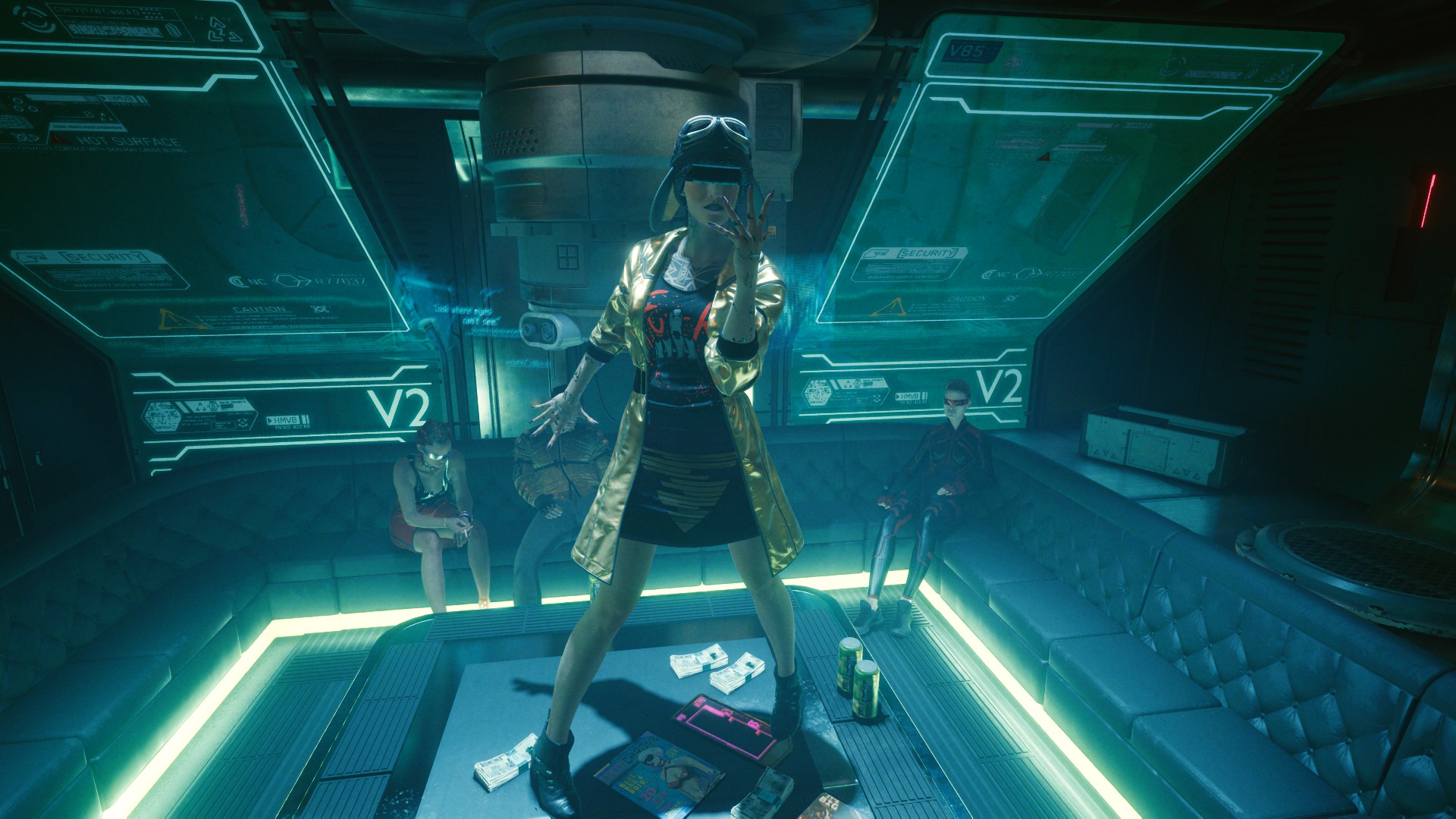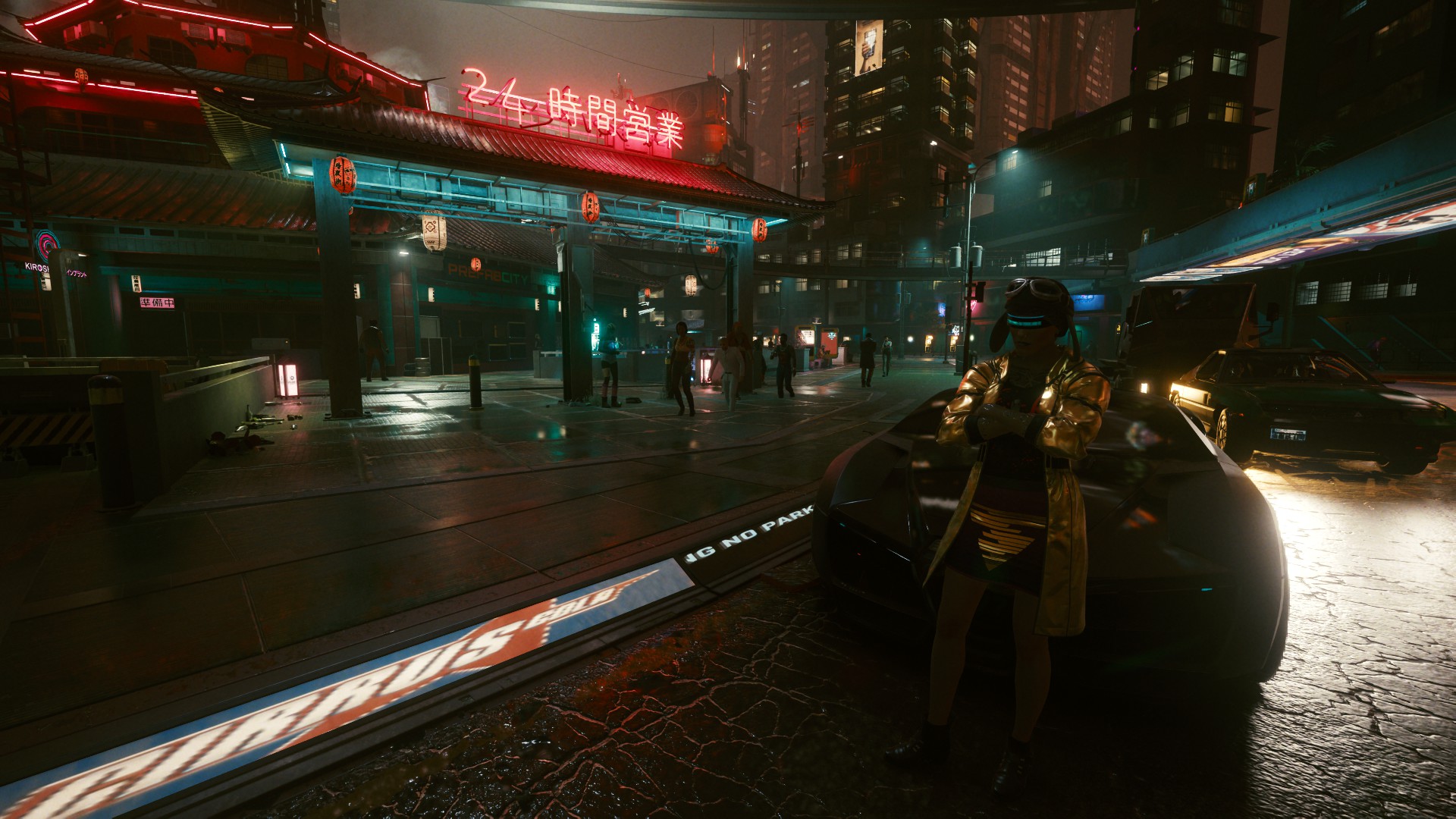Cyberpunk 2077 on GeForce Now is brilliant if you don't have an RTX card
Nvidia's streaming platform is an oasis during a drought.

Cyberpunk 2077's vision of the future is firmly rooted in the '80s, and its design owes everything to the last decade of open world games, but it's still managed to offer me a glimpse of the future—one where most of my gaming might be fuelled by the cloud.
My PC, which I treated myself to when I first joined PC Gamer, has kept me enjoying the most demanding games at the flashiest settings for a while now, but it's starting to hit a few road bumps. Microsoft Flight Simulator really pushed it beyond the limit, but that's also a game that looks impossibly real, designed to look incredible even years from now. But I'm having to make some sacrifices in other games, too, as well as being locked out of newer features.
Typical frugal Scot that I am, I managed to stop myself from splashing out on the first batch of Nvidia's RTX graphics cards, opting to stick with my excellent 1080Ti until more games started taking advantage of all these new bells and whistles. And now I'm rightly being punished for not hitching my ride to this wagon straight away, as I'm ready to enter the flashy world of ray tracing smack bang in the middle of a shortage.

Cyberpunk 2077 is the first game where I've felt like I needed ray tracing to really appreciate what the studio was trying to create. Everyone makes a big deal about how amazing Control looks with ray tracing, but Control looks amazing all the time. Cyberpunk does not. Night City's got a strong look, but low quality textures and lighting leaves the place often looking flat and dreary. Chuck in ray tracing lighting and reflections, though, and the city and characters start to come to life. At times the difference is subtle, but in other places it's like night and day. None of which I can actually experience on my PC.
If it was just ray tracing I was missing out on, I could probably ignore it, but Cyberpunk's also very demanding and not especially optimised. To get a steady 60 fps at 1440p, I have to go all the way down to the low preset, and the actually-not-especially-impressive performance gain isn't worth using my other monitor and dropping it down to 1080p. Either way, I'm having to cut a lot of corners just to get a reasonable framerate.
Unable to summon a 3080 out of thin air, I started eyeing up GeForce Now. I've got an Nvidia Shield TV Pro, so I thought I might as well dive further into Nvidia's ecosystem. What's one more added to the pile? The service is a little different from the likes of Stadia, as you're playing games that you've purchased on stores like Steam and GOG, and then accessing your library using GeForce Now, which then assigns you a rig to play on over the cloud. And it works surprisingly well.

GeForce Now can be installed on your Shield, phone, some TVs or your PC, and the only hurdle is your internet connection. Which might be an insurmountable one. It needs to be steady more than it needs to be fast, and Nvidia recommends 25 Mbps for 1080p at 60fps, though in my experience you'll want to at least double that. A wired connection is the way to go, though wireless via a 5GHz is viable. Not recommended for Cyberpunk 2077, though.
Keep up to date with the most important stories and the best deals, as picked by the PC Gamer team.
Right now, the biggest hook is getting access to all the RTX magic without a card. In Cyberpunk 2077's case, that means ray tracing shadows, lighting and reflections, as well as various DLSS settings that will help you find the right balance between performance and fidelity. Even though I was ready to get a 3080, I was still on the fence about ray tracing, but now I'm a convert.
I'm getting a high-end PC beamed into my living room without shelling out a big wad of cash, so it feels like a bit of a steal. It's not perfect, though. The image quality isn't quite as high as the original, and during combat or high speed chases I've noticed some hiccups, though both of those are down to my not-great internet speed. The one thing that really feels like it's missing is support for resolutions above 1080p. I've got a 4K TV, but honestly I think 4K streaming would be out of reach for my connection anyway, so it's not a huge loss. The Shield TV's AI upscaling feature comes in quite handy here, not to the point that it mimics 4K, but it at least removes the blurriness that comes from streaming at 1080p on a 4K display.

If you don't have an RTX card or a PC that can handle Cyberpunk 2077, GeForce Now is probably the best way to play the game. While you can start using the service for free, that won't let you take advantage of any RTX features, so you'll have to pay for Founders membership. That's £4.99/$4.99 a month, which doesn't feel too steep.
Founders membership, it's worth noting, doesn't give you unfettered access, and with the popularity of Cyberpunk you might find yourself queuing. Being stuck in a queue to play a singleplayer game that you already own absolutely sucks, and highlights one of the biggest concerns I have about cloud gaming generally: that we're giving away the last shred of actual ownership we have over our games.
As well as queuing, you can get logged out of your game due to inactivity, and after six hours you'll be given the boot. It's like playing an MMO who is also your mum. Yes, six hours is a long time to play a game without a proper break, but I will fight any machine that tells me to log off.
The future is going to be weird. It's empowering, sure. You can just conjure up a gaming rig. It's ridiculous. And basically effortless. But it also introduces a lot of new frustrations and concessions. All of them, I think, worth it, at least until you can beef up your own PC. As an outright replacement for a high-end gaming PC GeForce Now isn't there yet, but it looks like it's heading that way.

Fraser is the UK online editor and has actually met The Internet in person. With over a decade of experience, he's been around the block a few times, serving as a freelancer, news editor and prolific reviewer. Strategy games have been a 30-year-long obsession, from tiny RTSs to sprawling political sims, and he never turns down the chance to rave about Total War or Crusader Kings. He's also been known to set up shop in the latest MMO and likes to wind down with an endlessly deep, systemic RPG. These days, when he's not editing, he can usually be found writing features that are 1,000 words too long or talking about his dog.

